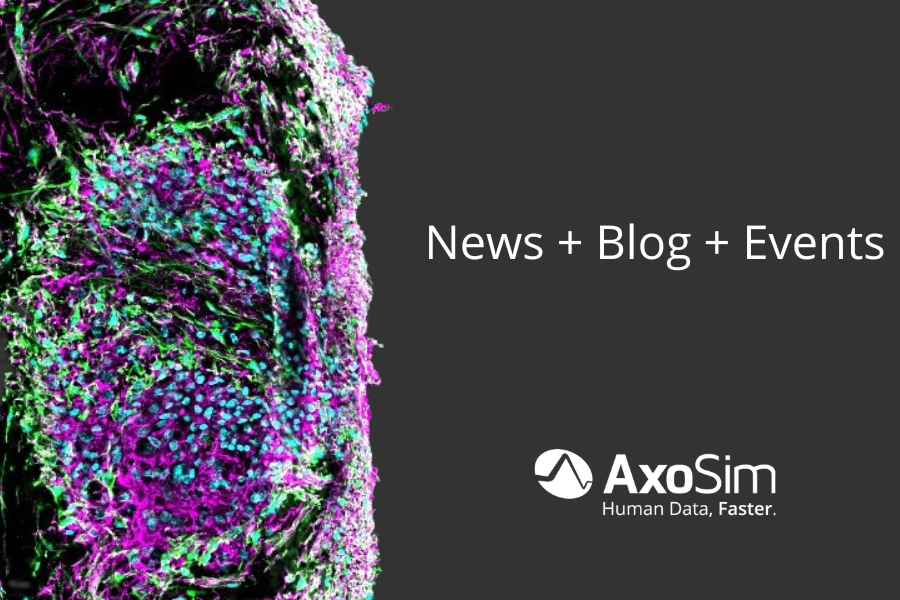The Tech Tribune Profiles AxoSim Co-Founder Michael Moore, PhD
News and Blog
 Check out The Tech Tribune’s Q&A piece with our Co-Founder Michael J. Moore, PhD. AxoSim is honored to be featured three years running as one of Tech Tribune’s best start ups in Louisiana.
Check out The Tech Tribune’s Q&A piece with our Co-Founder Michael J. Moore, PhD. AxoSim is honored to be featured three years running as one of Tech Tribune’s best start ups in Louisiana.
Tell us the origin story of AxoSim – what problem were you trying to solve and why?
In my research laboratory at Tulane’s Department of Biomedical Engineering, we were interested in gaining a better understanding of how different molecules govern the growth and repair of the nervous system, in particular how those nerves can extend axonal processes over long distances and navigate toward specific targets. To address these questions, we developed a series of three-dimensional cell culture systems that enabled us to systematically manipulate the physical shape and chemistry of the microenvironment surrounding nerve cells. We were also developing computer models so that we could compare computational predictions with real experiments. We received about $1M in grant funding to do this and published several research papers.
As I started pondering what we would do next with these model systems, I was a little dissatisfied with the thought that any translational potential (the ability to affect the lives of real people) would probably be a long way off, maybe even beyond my lifetime. Around this same time, I often found myself veritably awestruck by the elegant structure of the cells growing in our hydrogel systems. Usually, neurons growing in culture extend processes in a very random and disorganized way. When we provided them with a 3D environment, and some extremely basic shapes in which they were confined to grow, we observed a highly organized tissue architecture that was very similar to real nerve tissue structure. I wondered if we could insert electrodes into this organized structure and measure organized electrical responses the way neurologists do with patients to assess nerve function. Collaborating with a neuroscientist with expertise in electrophysiology, we were able to show it was relatively easy to do just that. And so, we decided to explore whether our model system might have even greater and more immediate utility as a “microphysiological” model, that is, a very small (less than 1 mm in width) representation of living tissue whose basic physiology recapitulates the main functions of actual living nerve.
Our now CEO, Lowry Curley, who was my first PhD graduate, had laid the groundwork for much of our earliest work, and he came back from postdoctoral studies in Europe to investigate what we could do next with our model. I had been aware of other startups forming based on the idea of cultured tissue as microphysiological models for helping pharmaceutical companies test new drugs, but almost no one was working on nerve tissue at the time. We both participated in the NSF I-Corps program, which puts scientists through a sort of entrepreneurial boot camp in which participants have to interview over a hundred potential customers and industry stakeholders to determine whether there is a product-market fit for your nascent technology. This process convinced us that we were on to something, and so we decided to go ahead and start our new company.
* Photo Courtesy of Paula Burch*